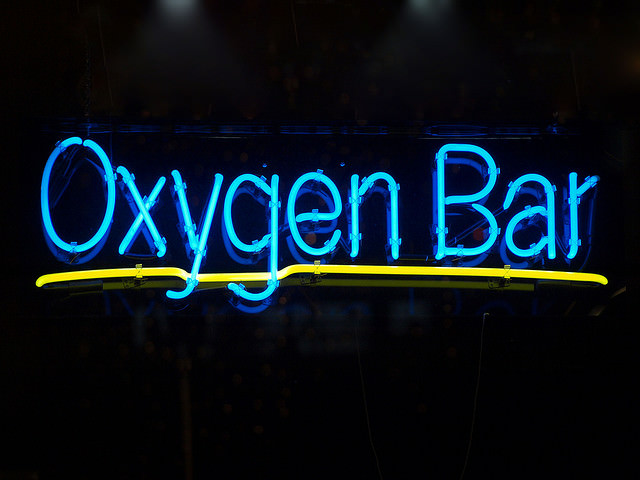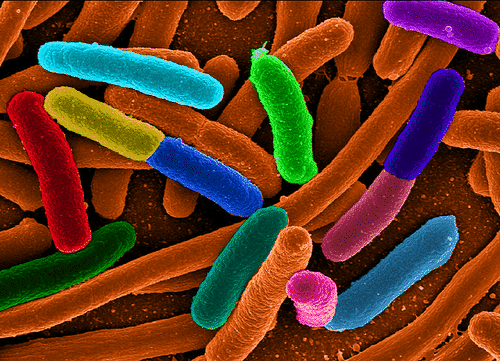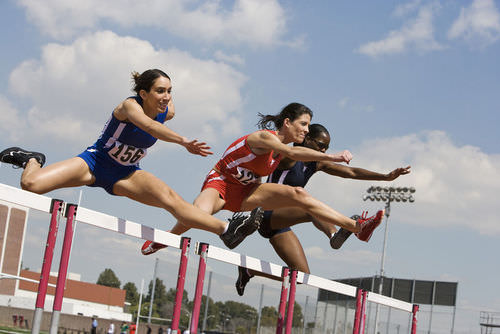2.23: Anaerobic and Aerobic Respiration
- Page ID
- 8643
\( \newcommand{\vecs}[1]{\overset { \scriptstyle \rightharpoonup} {\mathbf{#1}} } \)
\( \newcommand{\vecd}[1]{\overset{-\!-\!\rightharpoonup}{\vphantom{a}\smash {#1}}} \)
\( \newcommand{\dsum}{\displaystyle\sum\limits} \)
\( \newcommand{\dint}{\displaystyle\int\limits} \)
\( \newcommand{\dlim}{\displaystyle\lim\limits} \)
\( \newcommand{\id}{\mathrm{id}}\) \( \newcommand{\Span}{\mathrm{span}}\)
( \newcommand{\kernel}{\mathrm{null}\,}\) \( \newcommand{\range}{\mathrm{range}\,}\)
\( \newcommand{\RealPart}{\mathrm{Re}}\) \( \newcommand{\ImaginaryPart}{\mathrm{Im}}\)
\( \newcommand{\Argument}{\mathrm{Arg}}\) \( \newcommand{\norm}[1]{\| #1 \|}\)
\( \newcommand{\inner}[2]{\langle #1, #2 \rangle}\)
\( \newcommand{\Span}{\mathrm{span}}\)
\( \newcommand{\id}{\mathrm{id}}\)
\( \newcommand{\Span}{\mathrm{span}}\)
\( \newcommand{\kernel}{\mathrm{null}\,}\)
\( \newcommand{\range}{\mathrm{range}\,}\)
\( \newcommand{\RealPart}{\mathrm{Re}}\)
\( \newcommand{\ImaginaryPart}{\mathrm{Im}}\)
\( \newcommand{\Argument}{\mathrm{Arg}}\)
\( \newcommand{\norm}[1]{\| #1 \|}\)
\( \newcommand{\inner}[2]{\langle #1, #2 \rangle}\)
\( \newcommand{\Span}{\mathrm{span}}\) \( \newcommand{\AA}{\unicode[.8,0]{x212B}}\)
\( \newcommand{\vectorA}[1]{\vec{#1}} % arrow\)
\( \newcommand{\vectorAt}[1]{\vec{\text{#1}}} % arrow\)
\( \newcommand{\vectorB}[1]{\overset { \scriptstyle \rightharpoonup} {\mathbf{#1}} } \)
\( \newcommand{\vectorC}[1]{\textbf{#1}} \)
\( \newcommand{\vectorD}[1]{\overrightarrow{#1}} \)
\( \newcommand{\vectorDt}[1]{\overrightarrow{\text{#1}}} \)
\( \newcommand{\vectE}[1]{\overset{-\!-\!\rightharpoonup}{\vphantom{a}\smash{\mathbf {#1}}}} \)
\( \newcommand{\vecs}[1]{\overset { \scriptstyle \rightharpoonup} {\mathbf{#1}} } \)
\( \newcommand{\vecd}[1]{\overset{-\!-\!\rightharpoonup}{\vphantom{a}\smash {#1}}} \)
\(\newcommand{\avec}{\mathbf a}\) \(\newcommand{\bvec}{\mathbf b}\) \(\newcommand{\cvec}{\mathbf c}\) \(\newcommand{\dvec}{\mathbf d}\) \(\newcommand{\dtil}{\widetilde{\mathbf d}}\) \(\newcommand{\evec}{\mathbf e}\) \(\newcommand{\fvec}{\mathbf f}\) \(\newcommand{\nvec}{\mathbf n}\) \(\newcommand{\pvec}{\mathbf p}\) \(\newcommand{\qvec}{\mathbf q}\) \(\newcommand{\svec}{\mathbf s}\) \(\newcommand{\tvec}{\mathbf t}\) \(\newcommand{\uvec}{\mathbf u}\) \(\newcommand{\vvec}{\mathbf v}\) \(\newcommand{\wvec}{\mathbf w}\) \(\newcommand{\xvec}{\mathbf x}\) \(\newcommand{\yvec}{\mathbf y}\) \(\newcommand{\zvec}{\mathbf z}\) \(\newcommand{\rvec}{\mathbf r}\) \(\newcommand{\mvec}{\mathbf m}\) \(\newcommand{\zerovec}{\mathbf 0}\) \(\newcommand{\onevec}{\mathbf 1}\) \(\newcommand{\real}{\mathbb R}\) \(\newcommand{\twovec}[2]{\left[\begin{array}{r}#1 \\ #2 \end{array}\right]}\) \(\newcommand{\ctwovec}[2]{\left[\begin{array}{c}#1 \\ #2 \end{array}\right]}\) \(\newcommand{\threevec}[3]{\left[\begin{array}{r}#1 \\ #2 \\ #3 \end{array}\right]}\) \(\newcommand{\cthreevec}[3]{\left[\begin{array}{c}#1 \\ #2 \\ #3 \end{array}\right]}\) \(\newcommand{\fourvec}[4]{\left[\begin{array}{r}#1 \\ #2 \\ #3 \\ #4 \end{array}\right]}\) \(\newcommand{\cfourvec}[4]{\left[\begin{array}{c}#1 \\ #2 \\ #3 \\ #4 \end{array}\right]}\) \(\newcommand{\fivevec}[5]{\left[\begin{array}{r}#1 \\ #2 \\ #3 \\ #4 \\ #5 \\ \end{array}\right]}\) \(\newcommand{\cfivevec}[5]{\left[\begin{array}{c}#1 \\ #2 \\ #3 \\ #4 \\ #5 \\ \end{array}\right]}\) \(\newcommand{\mattwo}[4]{\left[\begin{array}{rr}#1 \amp #2 \\ #3 \amp #4 \\ \end{array}\right]}\) \(\newcommand{\laspan}[1]{\text{Span}\{#1\}}\) \(\newcommand{\bcal}{\cal B}\) \(\newcommand{\ccal}{\cal C}\) \(\newcommand{\scal}{\cal S}\) \(\newcommand{\wcal}{\cal W}\) \(\newcommand{\ecal}{\cal E}\) \(\newcommand{\coords}[2]{\left\{#1\right\}_{#2}}\) \(\newcommand{\gray}[1]{\color{gray}{#1}}\) \(\newcommand{\lgray}[1]{\color{lightgray}{#1}}\) \(\newcommand{\rank}{\operatorname{rank}}\) \(\newcommand{\row}{\text{Row}}\) \(\newcommand{\col}{\text{Col}}\) \(\renewcommand{\row}{\text{Row}}\) \(\newcommand{\nul}{\text{Nul}}\) \(\newcommand{\var}{\text{Var}}\) \(\newcommand{\corr}{\text{corr}}\) \(\newcommand{\len}[1]{\left|#1\right|}\) \(\newcommand{\bbar}{\overline{\bvec}}\) \(\newcommand{\bhat}{\widehat{\bvec}}\) \(\newcommand{\bperp}{\bvec^\perp}\) \(\newcommand{\xhat}{\widehat{\xvec}}\) \(\newcommand{\vhat}{\widehat{\vvec}}\) \(\newcommand{\uhat}{\widehat{\uvec}}\) \(\newcommand{\what}{\widehat{\wvec}}\) \(\newcommand{\Sighat}{\widehat{\Sigma}}\) \(\newcommand{\lt}{<}\) \(\newcommand{\gt}{>}\) \(\newcommand{\amp}{&}\) \(\definecolor{fillinmathshade}{gray}{0.9}\)
Why oxygen?
Oxygen is the final electron acceptor at the end of the electron transport chain of aerobic respiration. In the absence of oxygen, only a few ATP are produced from glucose. In the presence of oxygen, many more ATP are made.
The Presence of Oxygen
There are two types of cellular respiration: aerobic and anaerobic. One occurs in the presence of oxygen (aerobic), and one occurs in the absence of oxygen (anaerobic). Both begin with glycolysis - the splitting of glucose.
Glycolysis is an anaerobic process - it does not need oxygen to proceed. This process produces a minimal amount of ATP. The Krebs cycle and electron transport do need oxygen to proceed, and in the presence of oxygen, these processes produce much more ATP than glycolysis alone.
Scientists think that glycolysis evolved before the other stages of cellular respiration. This is because the other stages need oxygen, whereas glycolysis does not, and there was no oxygen in Earth’s atmosphere when life first evolved about 3.5 to 4 billion years ago. Cellular respiration that proceeds without oxygen is called anaerobic respiration.
Then, about 2 or 3 billion years ago, oxygen was gradually added to the atmosphere by early photosynthetic bacteria (cyanobacteria). After that, living things could use oxygen to break down glucose and make ATP. Today, most organisms make ATP with oxygen. They follow glycolysis with the Krebs cycle and electron transport to make more ATP than by glycolysis alone. Cellular respiration that proceeds in the presence of oxygen is called aerobic respiration.
Aerobic vs. Anaerobic Respiration: A Comparison
Aerobic respiration, which takes place in the presence of oxygen, evolved after oxygen was added to Earth’s atmosphere. This type of respiration is useful today because the atmosphere is now 21% oxygen. However, some anaerobic organisms that evolved before the atmosphere contained oxygen have survived to the present. Therefore, anaerobic respiration, which takes place without oxygen, must also have advantages.
Advantages of Aerobic Respiration
A major advantage of aerobic respiration is the amount of energy it releases. Without oxygen, organisms can split glucose into just two molecules of pyruvate. This releases only enough energy to make two ATP molecules. With oxygen, organisms can break down glucose all the way to carbon dioxide. This releases enough energy to produce up to 38 ATP molecules. Thus, aerobic respiration releases much more energy than anaerobic respiration.
The amount of energy produced by aerobic respiration may explain why aerobic organisms came to dominate life on Earth. It may also explain how organisms were able to become multicellular and increase in size.
Advantages of Anaerobic Respiration
One advantage of anaerobic respiration, also known as fermentation, is obvious. It lets organisms live in places where there is little or no oxygen. Such places include deep water, soil, and the digestive tracts of animals such as humans (see Figure below).
 E. coli bacteria are anaerobic bacteria that live in the human digestive tract.
E. coli bacteria are anaerobic bacteria that live in the human digestive tract.Another advantage of anaerobic respiration is its speed. It produces ATP very quickly. For example, it lets your muscles get the energy they need for short bursts of intense activity (see Figure below). Aerobic respiration, on the other hand, produces ATP more slowly.
 The muscles of these hurdlers need to use anaerobic respiration for energy. It gives them the energy they need for the short-term, intense activity of this sport.
The muscles of these hurdlers need to use anaerobic respiration for energy. It gives them the energy they need for the short-term, intense activity of this sport.Summary
- Cellular respiration always begins with glycolysis, which can occur either in the absence or presence of oxygen.
- Cellular respiration that proceeds in the absence of oxygen is anaerobic respiration.
- Cellular respiration that proceeds in the presence of oxygen is aerobic respiration.
- Anaerobic respiration evolved prior to aerobic respiration.
- Aerobic respiration produces much more ATP than anaerobic respiration.
- Anaerobic respiration occurs more quickly than aerobic respiration.
Review
- Define aerobic and anaerobic respiration.
- What process is common to both aerobic and anaerobic respiration?
- Why do scientists think that glycolysis evolved before the other stages of cellular respiration?
- What is the main advantage of aerobic respiration? Of anaerobic respiration?
- Tanya is on the high school track team and runs the 100-meter sprint. Marissa is on the cross-country team and runs 5-kilometer races. Explain which type of respiration the muscle cells in each runner’s legs use.
| Image | Reference | Attributions |
 |
[Figure 1] | Credit: Julo (Wikimedia);Mariana Ruiz Villarreal (LadyofHats) for CK-12 Foundation Source: commons.wikimedia.org/wiki/File:BloodPressure.jpg ; CK-12 Foundation License: CC BY-NC 3.0 |
 |
[Figure 2] | Credit: User:Mattosaurus/Wikimedia Commons;Megan Totah Source: commons.wikimedia.org/wiki/File:Diverse_e_Coli.png ; CK-12 Foundation License: Public Domain |
 |
[Figure 3] | Credit: Image copyright bikeriderlondon, 2014 Source: http://www.shutterstock.com License: Used under license from Shutterstock.com |

